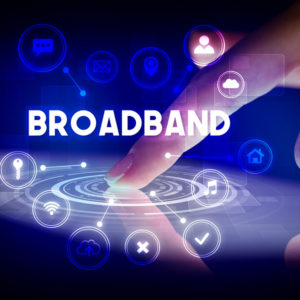The push for increased broadband access, with some even calling it a “basic human right,” has led the White House, Congress and state governments to try to connect every American to the internet. But, like many other ideas for how the government can “help,” the solution to the problem has been to spend money and create more programs rather than determining which programs are the most effective solution.
And like other duplicative and overlapping programs, strict oversight by the 118th Congress is essential to accomplishing the objective of widespread broadband deployment without waste, fraud, abuse and mismanagement.
According to Federal Communications Commissioner Brendan Carr, before the passage of the Infrastructure Investment and Jobs Act, there was up to $800 billion available for federal broadband programs. More than half of that money was provided between 2019 and 2021. Carr also said that $80 billion would connect all unserved and underserved households across the country.
The Coronavirus Aid, Relief and Economic Security Act provided $150 billion to state and local governments to use as they wished to mitigate the effects of the COVID-19 pandemic, including broadband; the Consolidated Appropriations Act, 2021, provided $7 billion for various infrastructure initiatives including broadband; and the American Rescue Plan Act, which included $350 billion for state and local governments with sufficient flexibility to allow some or all the money to be spent on broadband infrastructure.
Even though many states were already using tens of millions of dollars from those several pots of money, which in some cases was sufficient to connect their unserved and underserved households, the IIJA provided an additional $65 billion for broadband programs, including $45 billion for the Broadband Equity, Access and Deployment funding program. While these are the largest historical individual allocations of funding that could be used for broadband deployment, they represent a fraction of the total federal broadband programs.
According to a May 2022 Government Accountability Office report, 133 programs across 15 federal agencies can be used for broadband deployment. But even with the federal government’s expenditure of $44 billion between 2015 and 2020, millions of Americans still do not have broadband access.
The GAO report noted that the fragmentation of these programs has had the most negative effect on “communities with limited resources.” For example, in its October 2021 announcement of funding opportunities for the ReConnect program, the Rural Utilities Service permitted recipients of the Federal Communications Commission’s Rural Digital Opportunities Fund to apply for ReConnect funding.
Double-dipping into funding sources means fewer unserved areas could receive funds to help with broadband infrastructure in their communities. Taxpayers should be concerned not only about the lack of oversight of all these different federal broadband programs but also about the conflicting guidance and regulations surrounding the funding applications.
The CARES Act, the American Rescue Plan Act, and the Infrastructure Investment and Jobs Act do not have the same requirements to access the hundreds of billions of dollars that are potentially available under those laws.
The Rural Utilities Service ReConnect funding notice included preferences for governmental or quasi-governmental entities and entities that agree to unrelated policy requirements like net neutrality.
The Department of Treasury’s American Rescue Plan Act guidance sets preferences for fiber and either government-owned or nonprofit broadband networks. Despite Congress establishing a technology-neutral requirement in the Infrastructure Investment and Jobs Act, the National Telecommunications and Information Administration guidance in its Broadband Equity, Access and Deployment notice of funding opportunity encouraged symmetrical 100/100 Mbps speed thresholds for new infrastructure deployment, which preferences one technology over others and may reduce the amount of funding available for unserved communities as efforts are made to bring existing broadband networks “up to speed.”
It also promotes government-owned networks and preferences for unionized workforces. Not only should Congress provide a single standard for all broadband funding but also federal agencies must not be allowed to promulgate regulations or provide guidance beyond those standards, particularly when they would hinder broadband deployment to unserved and underserved areas.
The multiple House and Senate committees with jurisdiction over broadband funding must hold joint, bicameral hearings and determine which of the 133 programs across 15 agencies are the most effective in providing increased access to broadband across the country. They should also set a standard for funding that is vendor- and technology-neutral, so state and local governments can determine if fiber, cable, mobile broadband, satellite, TV white space or any other method of accessing the internet fits their needs.
The committees should also exercise the strict oversight needed to ensure that unserved and underserved communities are provided with broadband access and prohibit overbuilding where communities are already served. Combined with the updated broadband maps that are beginning to be provided, it should be possible to avoid duplication, waste, fraud, abuse and mismanagement, and cost-effectively provide broadband access to every American who wishes to be connected to the internet.


